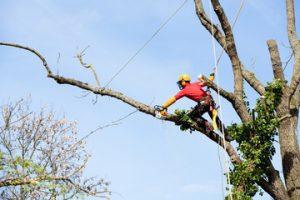With busy lives, it can be difficult to keep up with cleaning. Cochrane Cleaning Services can help provide a fresh and inviting living space.

Keeping up with a consistent cleaning schedule allows people to spend time doing what matters most. This may include family outings, movie nights or enjoying quiet moments at home.
Cleaning services are one of the few business ventures that can be tailored to a variety of needs. Some businesses focus on janitorial services for commercial buildings and offices while others specialize in maid service for residential homes or even window or carpet cleanings that are done less frequently. In order to provide a wide range of options, many cleaning services require specialized equipment such as high-powered vacuum cleaners, commercial floor scrubbers, and ladders or stepping stools for hard to reach areas such as vents, ceiling fans, windows, and shelves.
For clients who choose to hire recurring cleaning services, there are many benefits that come with having the comfort of knowing their spaces will be maintained on a regular basis. Recurring cleaning services reduce the buildup of dust, dirt, and grime over time, resulting in a consistently clean and organized space that is both welcoming to visitors and guests and reflects well on personal or professional image. In addition, regular maintenance helps to prolong the life of furniture, carpets, and other appliances by reducing wear and tear and preventing stains and damage.
While it may seem like a luxury to have a clean and organized living environment, the fact of the matter is that it also saves valuable time and energy that could be better spent on other pursuits. By hiring a cleaning service, you can save yourself the hassle and stress of maintaining your home or office and instead use that time to relax and enjoy all the things you love.
Another benefit of a recurring cleaning service is the peace of mind that comes with knowing that the task is being taken care of by professionals who are experienced and dedicated to their work. This is particularly important in the wake of the COVID-19 pandemic, when it is critical to maintain a safe and healthy environment. Recurring cleaning services have the expertise and sanitization protocols to ensure that your space is always free from germs, bacteria, and other contaminants.
Healthier Living Environment
In addition to saving time, recurring cleaning services provide numerous health benefits. They help you to create a healthy living environment, free from harmful bacteria and allergens, and improve indoor air quality. This can prevent a wide range of illnesses, including asthma and allergies.
Professional cleaners use specialized tools and high-quality natural products that are designed to eliminate dust, dirt, and other irritants. They also use a systemic approach to ensure every part of your home is cleaned, even those hard-to-reach areas. This is especially important in Arizona, where the unique climate can introduce desert dust into your home.
Additionally, a clean and tidy space encourages healthier habits, such as nutritious eating and exercise. It can even boost your mood, contributing to greater mental well-being and productivity.
With a consistent stream of professional cleaning, your home or office can stay consistently tidy and presentable. This means that your guests will always get a welcoming first impression and you can avoid the stress of keeping up with housework.
Recurring cleaning services offer a variety of packages that can fit your needs. For example, you can choose from monthly, biweekly, or weekly visits. During the initial consultation, you can discuss your specific requirements and preferences with your cleaning service and they will work out a tailored plan for your space.
Another important benefit of recurring cleaning services is that they can tackle any size job. From a deep cleaning before the holidays to a one-off visit before houseguests arrive, a cleaning service will use a thorough process to remove any mess and make your space look spotless.
In today’s busy world, maintaining a tidy and productive space can be difficult. With a recurring cleaning service, you can save valuable time, enjoy numerous health benefits, and still have a spotless home without having to lift a finger. This is a win-win solution for anyone who wants to achieve a truly tidy and healthy lifestyle. It’s the perfect way to create a space where you can breathe deeply and focus on the things that matter most in life.
Peace of Mind
When you leave the house for work or run errands, a dirty home can add a sense of stress to your day. Returning to a clean, fresh space at the end of your day offers a much-needed breath of relief. Hiring professional cleaning services keeps your home in its best possible condition, extending the life of your furniture, drapes, and other items.
Choosing the right service starts with seeking recommendations from trusted sources or reading reviews online. Look for a service with consistent positive feedback that highlights their professionalism and reliability.
It’s also a good idea to choose a cleaner who is licensed and insured. This ensures that if any damage or mishap occurs during cleaning, you are protected from financial responsibility. Additionally, licensed professionals tend to prioritize customer satisfaction over profit, giving you added peace of mind that they’ll do a great job every time.
Once you’ve chosen a cleaning service, it’s helpful to keep the lines of communication open. If you’d like to see a specific area of your home cleaned differently, make sure you communicate this to the cleaner during the initial walkthrough or sooner. Similarly, let them know if you have any pets and whether or not they’re comfortable with them being in the home during their scheduled cleanings.
In addition to the peace of mind you’ll gain from a consistently clean home, hiring a professional cleaning service can free up your time to pursue other pursuits. This could mean taking a class, spending more time with family, or simply relaxing at home without the stress of a to-do list.
Recurring cleaning services can be a big investment, so it’s important to find a provider that you can trust. Taking the time to interview potential candidates, get recommendations, and review reviews will help you find a trustworthy and reliable cleaning service. With their expertise and established track record, these professionals can give you the peace of mind that comes from knowing your home is in good hands. So, if you’re ready to enjoy the benefits of a professionally cleaned home, contact a cleaning service today and schedule your first appointment.
More Time
When you spend time cleaning, you are essentially paying for the opportunity cost of doing something else. That something else could be playing with your children, taking a walk at the local farmer’s market, visiting friends, working out, shopping, meeting up with family, running errands, or any number of other things that offer immeasurable value to you and those around you. Cleaning services help you retain these valuable moments by reducing stress, keeping your environment tidy and inviting, and saving you valuable time. That’s a pretty good deal in our book! —B.M., Owner, Cleaning Service
We do the work so you can have more time to enjoy life!




